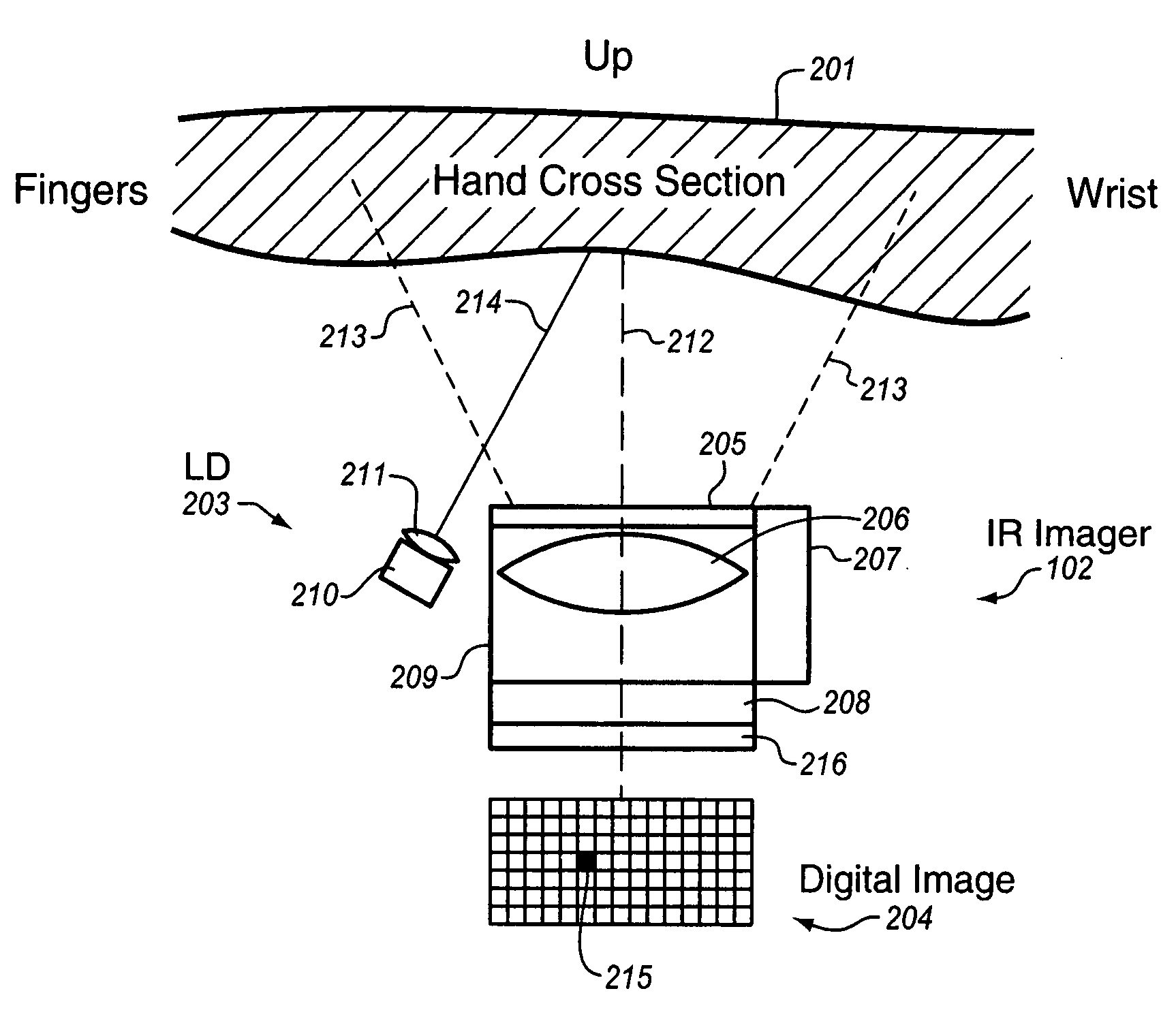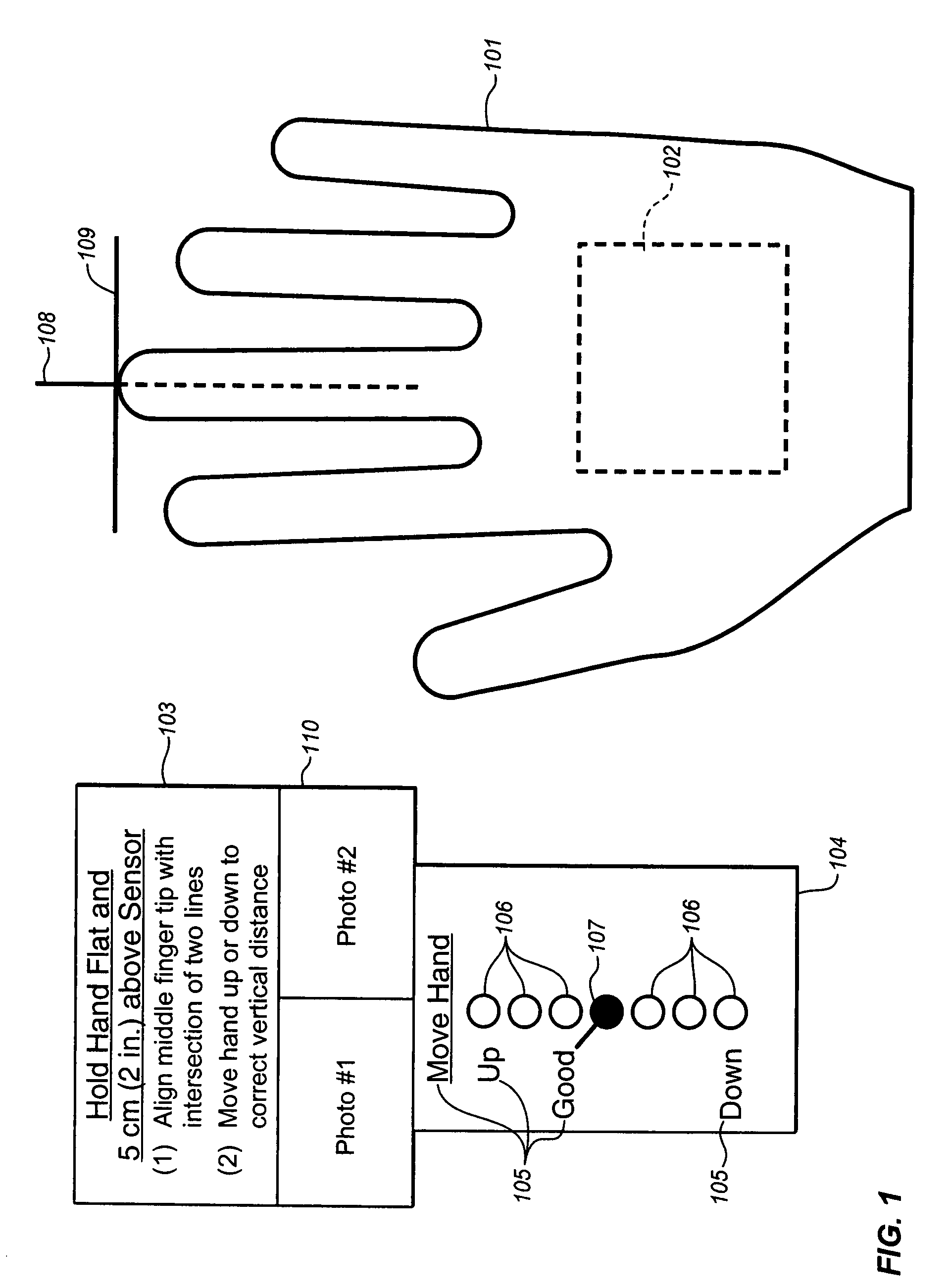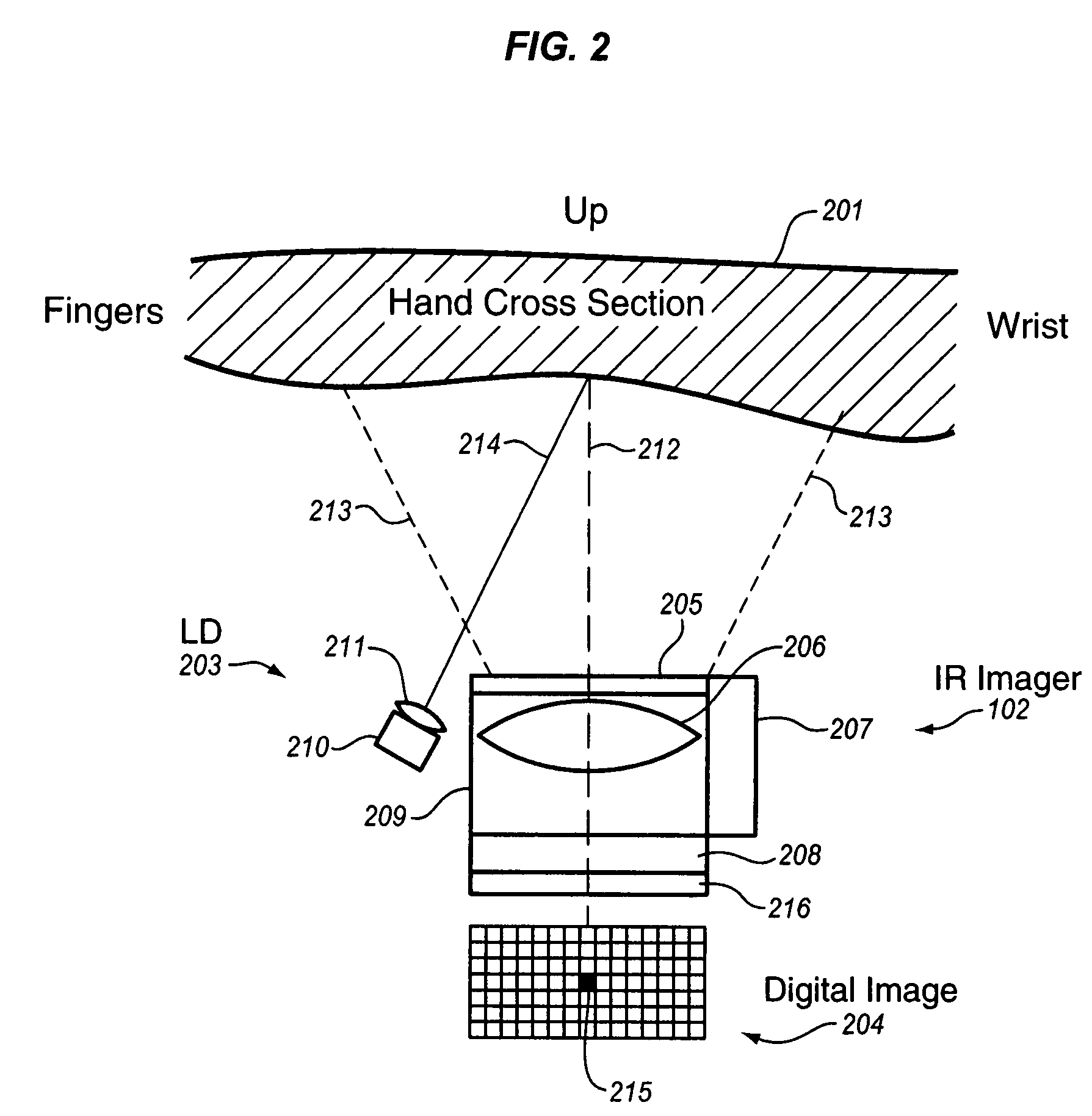Method and apparatus for biometric identification
a biometric identification and method technology, applied in the field of biometric identification of individuals, can solve the problems of loss of measurement accuracy, false acceptance, and sensors which must be touched by everyone accessing a public facility, and achieve the effects of reducing false rejection rate, low cost, and eliminating measurement errors caused by uncertainties in target range and horizontal registration
- Summary
- Abstract
- Description
- Claims
- Application Information
AI Technical Summary
Benefits of technology
Problems solved by technology
Method used
Image
Examples
Embodiment Construction
1. Preferred Embodiment for Palm Vein Pattern Identification
[0029]This detailed description of the preferred embodiment describes an electro-optical system and method for improved performance of subcutaneous vein pattern imagers for biometric identification, preferably hand vein imagers, and still more preferably palm vein imagers. Those skilled in the art can easily adapt the electro-optical devices described in this section to subcutaneous vein pattern imagers designed to scan other parts of the human body. Hand vein imagers include imagers that image the veins in any portion of the hand, including the palm of the hand, the back of the hand, or the front or back of any of the fingers.
[0030]FIG. 1 depicts how the biometric identification system appears to the individual being scanned; it shows a view looking down on the back of the right hand 101. The infrared imager module 102 is beneath the hand and, therefore, is depicted by the dashed lines. To the left of the hand is an instru...
PUM
 Login to View More
Login to View More Abstract
Description
Claims
Application Information
 Login to View More
Login to View More - R&D
- Intellectual Property
- Life Sciences
- Materials
- Tech Scout
- Unparalleled Data Quality
- Higher Quality Content
- 60% Fewer Hallucinations
Browse by: Latest US Patents, China's latest patents, Technical Efficacy Thesaurus, Application Domain, Technology Topic, Popular Technical Reports.
© 2025 PatSnap. All rights reserved.Legal|Privacy policy|Modern Slavery Act Transparency Statement|Sitemap|About US| Contact US: help@patsnap.com



